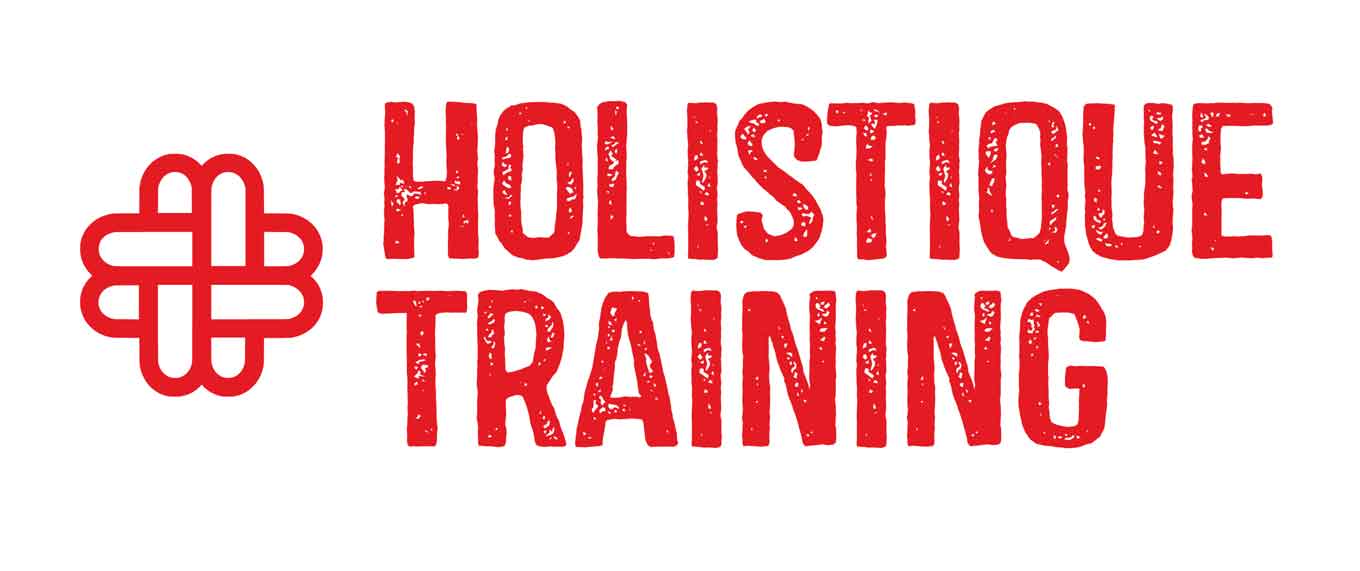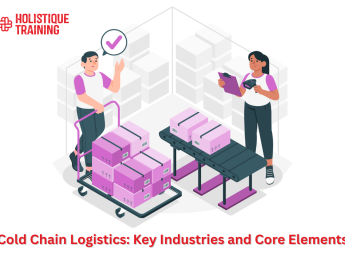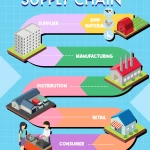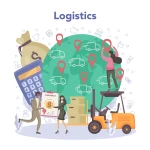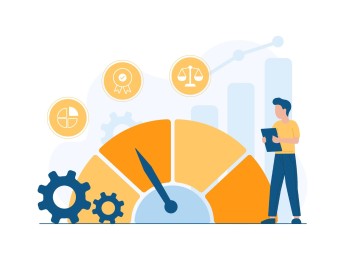- Table of Contents
- Introduction
- What is Cold Chain Logistics?
- The Importance of Cold Chain Logistics
- Public Health and Safety:
- Economic Efficiency:
- Global Trade and Market Expansion:
- Sustainability and Environmental Impact:
- Regulatory Compliance and Risk Management:
- Elements of a Cold Chain
- Packaging:
- Storage Facilities and Warehouses:
- Transportation Management:
- Quality Control:
- Compliance and Regulations:
- Technology Integration:
- Temperature Standards in Cold Chains
- Industries that Use Cold Chain Logistics
- Pharmaceuticals:
- Food and Beverage:
- Chemicals:
- Floral Industry:
- Biotechnology:
- Cosmetics:
- How to Manage a Cold Chain
- Planning:
- Technology Integration:
- Training:
- Partnerships:
- Continuous Improvement:
- Compliance and Risk Management:
- Conclusion
Introduction
Maintaining the integrity of products that are sensitive to temperature variations is crucial in many industries. From pharmaceuticals to food, the concept of cold chain logistics plays a pivotal role in ensuring that products are delivered safely and efficiently without compromising their quality. This blog post delves into the intricacies of cold chain logistics, exploring its importance, necessary elements, and challenges, while providing insights into how it is managed across various industries.
What is Cold Chain Logistics?
Cold chain logistics refers to the transportation and storage system designed specifically to maintain the temperature of products within a specified range. This system is essential for products that are sensitive to temperature fluctuations, such as vaccines, dairy products, fresh produce, and certain chemicals. The cold chain ensures that these products remain safe and effective from the point of origin to the final consumer.
The Importance of Cold Chain Logistics
Cold chain logistics plays a crucial role in various industries, ensuring that temperature-sensitive products maintain their integrity and safety from production to consumption. The importance of this specialized logistics system is multifaceted, impacting public health, economic efficiency, and sustainability.
Public Health and Safety:
In the pharmaceutical industry, cold chain logistics is essential for maintaining the efficacy of vaccines, biologics, and certain medications. These products often require precise temperature controls to remain effective. For example, vaccines that are exposed to temperatures outside their recommended range can lose potency, rendering them ineffective and potentially endangering public health. By ensuring that these products are stored and transported within specified temperature ranges, cold chain logistics helps prevent the distribution of ineffective or unsafe medical products.
Similarly, in the food industry, cold chain logistics is vital for preventing spoilage and reducing the risk of foodborne illnesses. Perishable goods such as dairy products, meat, seafood, and fresh produce must be kept at specific temperatures to inhibit the growth of harmful bacteria. Maintaining a robust cold chain ensures that these products reach consumers in a safe and consumable state, thereby protecting public health.
Economic Efficiency:
Cold chain logistics significantly contributes to economic efficiency by minimizing waste and loss. Spoilage of temperature-sensitive goods can lead to substantial financial losses for businesses. By implementing effective cold chain systems, companies can reduce the rate of spoilage, ensuring that more products reach their destination in sellable condition. This not only enhances profitability but also reduces the need for frequent replenishment, leading to cost savings in production and logistics.
Furthermore, a reliable cold chain can enhance a company’s reputation for quality and reliability, leading to increased customer trust and loyalty. Businesses that consistently deliver high-quality products are more likely to retain customers and gain a competitive edge in the market.
Global Trade and Market Expansion:
Cold chain logistics has opened up new opportunities for global trade and market expansion. By enabling the safe transport of perishable goods across long distances, businesses can access new markets and consumers can enjoy a wider variety of products year-round. For instance, tropical fruits can be shipped to colder climates, and high-quality seafood can be exported from coastal regions to inland areas, thanks to efficient cold chain systems.
This global reach not only benefits businesses by expanding their customer base but also enhances consumer choice and access to diverse products, contributing to improved standards of living.
Sustainability and Environmental Impact:
By reducing spoilage and waste, cold chain logistics contributes to sustainability efforts. Less waste means fewer resources are needed to produce replacement goods, leading to a reduction in the environmental footprint of production and logistics processes. Additionally, advancements in cold chain technology, such as energy-efficient refrigeration systems and eco-friendly packaging materials, further support environmental sustainability.
Companies that prioritizesustainable cold chain practices can also benefit from enhanced brand image and compliance with increasingly stringent environmental regulations.
Regulatory Compliance and Risk Management:
Adhering to regulatory standards is a critical aspect of cold chain logistics. Different industries and regions have specific regulations governing the storage and transport of temperature-sensitive goods. Compliance with these regulations ensures that products are safe for consumption or use and protects companies from legal liabilities.
Moreover, an effective cold chain system includes robust risk management strategies to address potential disruptions, such as equipment failures or delays. By proactively managing these risks, businesses can maintain the integrity of their products and avoid costly recalls or reputational damage.
In summary, cold chain logistics is indispensable for maintaining the quality and safety of temperature-sensitive products. Its importance spans public health, economic efficiency, global trade, sustainability, and regulatory compliance. As industries continue to evolve and consumer demands grow, the role of cold chain logistics will only become more critical in supporting the seamless and safe delivery of essential goods worldwide.
Elements of a Cold Chain
The effectiveness of cold chain logistics hinges on several interdependent elements, each playing a crucial role in maintaining the required temperature conditions throughout the supply chain. These elements ensure that temperature-sensitive products are stored, transported, and delivered without compromising their quality and safety. Let’s delve deeper into the key components that constitute a robust cold chain system:
Packaging:
Packaging is the first line of defense in maintaining temperature control during transit. It involves using materials and technologies designed to insulate and protect products from external temperature fluctuations. Common packaging solutions include insulated containers, gel packs, phase change materials, and dry ice. Each of these solutions is chosen based on the specific temperature requirements and duration of the journey.
Advanced packaging technologies also include vacuum insulation panels and reflective materials that enhance thermal protection. Additionally, smart packaging solutions with embedded sensors provide real-time temperature monitoring and alerts, allowing for immediate corrective actions if deviations occur.
Storage Facilities and Warehouses:
Cold storage facilities and warehouses are critical for storing temperature-sensitive goods before they are transported. These facilities are equipped with advanced refrigeration systems that maintain precise temperature settings tailored to the needs of different products. Continuous temperature monitoring and control systems are essential to ensure that products remain within specified temperature ranges.
Modern cold storage facilities often incorporate energy-efficient technologies and renewable energy sources to reduce their environmental impact. They may also feature humidity control systems to prevent moisture-related damage to products, particularly in the case of pharmaceuticals and certain food items.
Transportation Management:
The transportation component of the cold chain involves specialized vehicles and containers designed to maintain temperature control during transit. Refrigerated trucks, also known as reefers, are commonly used for land transport, while temperature-controlled containers are used for air and sea freight.
Transportation management systems (TMS) play a crucial role in optimizing routes and schedules to minimize transit times and reduce the risk of temperature excursions. These systems often integrate GPS tracking and telematics to provide real-time visibility into the location and condition of shipments, enabling proactive management of potential disruptions.
Quality Control:
Quality control is an integral part of cold chain logistics, ensuring that products meet safety and quality standards at every stage. This involves regular inspections, audits, and testing to verify that temperature conditions are maintained and that products remain within their acceptable quality parameters.
Quality control measures also include the calibration and maintenance of temperature monitoring equipment, as well as the implementation of standard operating procedures (SOPs) for handling temperature-sensitive goods. Training personnel in best practices for cold chain management is essential to uphold quality standards.
Compliance and Regulations:
Cold chain logistics must adhere to a complex web of regulations and standards that vary by industry and region. These include theGood Distribution Practice (GDP) guidelines for pharmaceuticals, the Hazard Analysis and Critical Control Points (HACCP) standards for food safety, and the International Air Transport Association (IATA) regulations for air transport. Compliance involves maintaining detailed records of temperature data, conducting regular audits, and ensuring that all equipment and processes meet regulatory requirements. Companies must stay informed about changes in regulations and standards to avoid legal liabilities and ensure the safe delivery of products.
Technology Integration:
Technology plays a pivotal role in enhancing the efficiency and reliability of cold chain logistics. Internet of Things (IoT) devices, sensors, and data analytics provide real-time visibility into the condition of products and the performance of the cold chain.
Predictive analytics can forecast potential risks and disruptions, allowing companies to take proactive measures to mitigate them. Blockchain technology is also being explored to enhance transparency and traceability in the cold chain, ensuring that all stakeholders have access to accurate and immutable records of temperature data.
By effectively integrating these elements, businesses can build a robust cold chain system that ensures the safe and efficient delivery of temperature-sensitive products. Each component is interconnected, requiring careful coordination and management to maintain the integrity of the cold chain and meet the high standards demanded by consumers and regulatory bodies alike.
Temperature Standards in Cold Chains
Temperature standards in cold chains vary depending on the type of product being transported. For example, vaccines typically require storage and transportation within a range of 2°C to 8°C. Frozen foods often need temperatures below -18°C, while fresh produce might be kept between 0°C and 4°C. Adhering to these standards is critical to maintaining product efficacy and safety.
Industries that Use Cold Chain Logistics
Cold chain logistics is indispensable in a variety of industries where temperature control is crucial to maintaining product quality and safety. These industries rely on sophisticated cold chain systems to transport and store goods that are sensitive to temperature fluctuations. Here’s an in-depth look at the primary sectors that utilize cold chain logistics:
Pharmaceuticals:
The pharmaceutical industry is one of the most critical users of cold chain logistics. Many pharmaceutical products, including vaccines, biologics, and certain medications, require precise temperature control to preserve their efficacy and safety. Vaccines, for instance, often need to be stored between 2°C and 8°C to remain effective. Any deviation from these temperature ranges can result in compromised potency, which can have serious implications for public health.
The distribution of pharmaceuticals involves stringent regulatory compliance to ensure that products are transported within specified temperature ranges. Cold chain logistics in this industry includes specialized packaging, temperature-controlled storage facilities, and transportation vehicles equipped with advanced monitoring systems to maintain the integrity of products throughout thesupply chain.
Food and Beverage:
The food and beverage industry heavily relies on cold chain logistics to ensure the freshness and safety of perishable goods. Products such as dairy, meat, seafood, fruits, and vegetables must be kept at specific temperatures to prevent spoilage and minimize the risk of foodborne illnesses. For example, seafood typically requires storage at temperatures below -18°C to preserve its quality.
Cold chain logistics in the food industry involves a complex network of refrigerated warehouses, trucks, and containers. The system is designed to maintain optimal temperature conditions from the point of harvest or production to the final consumer. This ensures that products retain their nutritional value and taste while minimizing waste due to spoilage.
Chemicals:
Certain chemicals and industrial products require temperature control to maintain stability and effectiveness. These products may be sensitive to heat, cold, or humidity, necessitating specialized handling and transport protocols. Cold chain logistics ensures that these chemicals are stored and transported under controlled conditions, preventing degradation or hazardous reactions.
The chemical industry often uses insulated containers and temperature-controlled transportation solutions to safeguard products during transit. Compliance with safety regulations is crucial to prevent accidents and ensure the safe delivery of chemical products.
Floral Industry:
The floral industry utilizes cold chain logistics to preserve the freshness and extend the shelf life of flowers and plants. Temperature control is essential to prevent wilting and decay, ensuring that flowers arrive at their destination in optimal condition. Cold chain logistics allows florists to offer a wide variety of fresh flowers year-round, regardless of seasonal limitations.
This industry employs refrigerated storage and transportation solutions to maintain the ideal temperature and humidity levels for different types of flowers. Advanced packaging techniques also play a role in protecting delicate blooms during transit.
Biotechnology:
The biotechnology sector requires cold chain logistics for the transport of sensitive biological materials, including enzymes, DNA samples, and other research-related substances. These materials often need to be stored at ultra-low temperatures to preserve their integrity for scientific and medical applications.
Cold chain logistics in biotechnology involves specialized freezers, cryogenic containers, and transportation solutions that maintain temperatures as low as -80°C. Real-time monitoring and data logging are critical to ensuring that these materials remain stable throughout the logistics process.
Cosmetics:
Some cosmetic products, particularly those with natural ingredients or active compounds, require temperature control to maintain their efficacy and shelf life. Cold chain logistics helps preserve the quality of these products by protecting them from temperature extremes that could cause separation or degradation.
The cosmetics industry uses temperature-controlled storage and transportation solutions to ensure that products reach consumers in their intended form, maintaining their effectiveness and customer satisfaction.
Table: Comparing Cold Chain Logistics in Three Different Industries
In summary, cold chain logistics is a vital component across various industries, each with unique requirements and challenges. By ensuring that temperature-sensitive products are stored and transported under optimal conditions, cold chain logistics supports the delivery of high-quality, safe, and effective goods to consumers worldwide. As technology advances and global trade expands, the role of cold chain logistics will continue to grow, offering new opportunities for innovation and efficiency in these critical sectors.
How to Manage a Cold Chain
Effective management of a cold chain is crucial for ensuring the integrity and quality of temperature-sensitive products throughout the supply chain. It involves a combination of strategic planning, technology integration, skilled personnel, and robust partnerships. Here’s a detailed exploration of the key aspects involved in managing a cold chain:
Planning:
Strategic planning is the foundation of effective cold chain management. It involves identifying the specific temperature requirements of different products and designing logistics processes to meet these needs. Planning includes route optimization to minimize transit times and reduce the risk of temperature excursions. It also involves contingency planning to address potential disruptions, such as equipment failures or delays.
Companies must assess the entire supply chain, from manufacturing to delivery, to identify critical control points where temperature monitoring and management are essential. This comprehensive approach ensures that all aspects of the cold chain are aligned with the product’s specific requirements.
Technology Integration:
Leveraging technology is crucial for enhancing the efficiency and reliability of cold chain logistics. Internet of Things (IoT) devices and sensors provide real-time temperature monitoring, allowing for immediate corrective actions if deviations occur. These technologies help ensure that products remain within specified temperature ranges throughout the logistics process.
Predictive analytics can forecast potential risks and disruptions, enabling proactive measures to mitigate them. For example, analytics can predict equipment failures or adverse weather conditions that might impact transportation. Blockchain technology is also being explored to enhance transparency and traceability, providing stakeholders with accurate and immutable records of temperature data.
Training:
Personnel involved in cold chain logistics must be adequately trained to handle temperature-sensitive products and respond to emergencies. Training programs should cover best practices for cold chain management, including proper handling, storage, and transportation techniques.
Employees should be familiar with the operation and maintenance of temperature monitoring equipment and understand the importance of maintaining compliance with regulatory standards. Regular training updates ensure that personnel are equipped with the latest knowledge and skills to manage the cold chain effectively.
Partnerships:
Collaborating with reliable logistics partners who specialize in cold chain solutions can enhance efficiency and reliability. These partners bring expertise and resources that can help optimize the cold chain process. Selecting partners with a proven track record in handling temperature-sensitive goods is essential for maintaining product quality.
Partnerships should be based on clear communication and shared goals, ensuring that all parties are aligned in their commitment to maintaining the integrity of the cold chain. Regular evaluations and feedback mechanisms can help identify areas for improvement and strengthen collaborative efforts.
Continuous Improvement:
Continuous improvement is vital for maintaining a robust cold chain system. Regular assessments and audits help identify areas for enhancement, ensuring that the cold chain remains efficient and effective. Companies should implement feedback loops to gather insights from stakeholders, including suppliers, logistics providers, and customers.
By analyzing performance data and incorporating lessons learned from past experiences, businesses can refine their cold chain processes. This iterative approach supports innovation and adaptation to changing market demands and technological advancements.
Table: Challenges of managing a cold chain
Compliance and Risk Management:
Adhering to regulatory standards is a critical aspect of cold chain management. Companies must stay informed about changes in regulations and standards to ensure compliance and avoid legal liabilities. Maintaining detailed records of temperature data and conducting regular audits are essential for demonstrating compliance.
Risk management strategies should be in place to address potential disruptions, such as equipment failures or transport delays. These strategies involve identifying risks, assessing their impact, and implementing measures to mitigate them. Effective risk management ensures that products remain safe and effective, even in the face of unforeseen challenges.
In summary, managing a cold chain requires a holistic approach that integrates strategic planning, advanced technology, skilled personnel, and strong partnerships. By focusing on continuous improvement and compliance, businesses can maintain the integrity of their cold chain systems, ensuring the safe and efficient delivery of temperature-sensitive products to consumers worldwide. As technology continues to evolve, the management of cold chains will become increasingly sophisticated, offering new opportunities for innovation and efficiency in the logistics industry.
Conclusion
Cold chain logistics plays a vital role across various industries, safeguarding the integrity of temperature-sensitive products from production to delivery. A comprehensive understanding of its components, significance, and challenges empowers businesses to optimize their cold chain processes, leading to improved product quality and heightened customer satisfaction. As technology advances, the landscape of cold chain logistics will continue to evolve, presenting exciting opportunities for innovation and efficiency in the transportation and storage of sensitive goods.
To further equip yourself with the knowledge and skills needed to excel in this dynamic field, consider enrolling in our course, Fundamentals of Distribution Logistics. This course offers in-depth insights into the principles and practices of effective logistics management, including cold chain logistics. You'll learn about strategic planning, technology integration, compliance, and risk management, all crucial for mastering the complexities of modern distribution systems. By completing this course, you'll be well-prepared to tackle the challenges of cold chain logistics and drive improvements in your organization’s supply chain operations.
